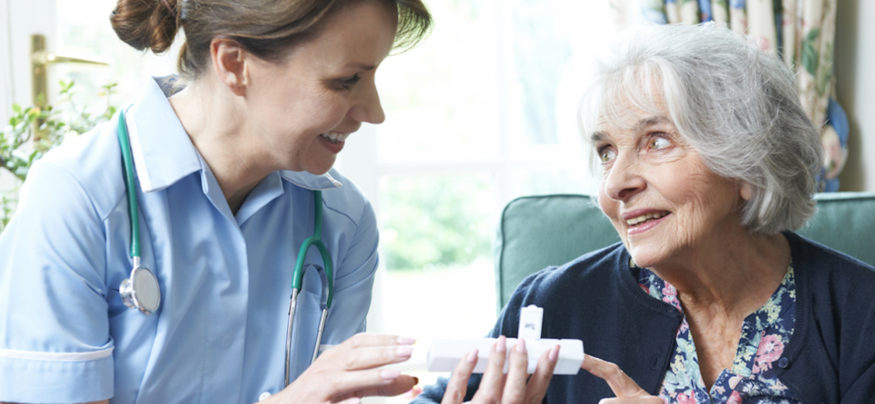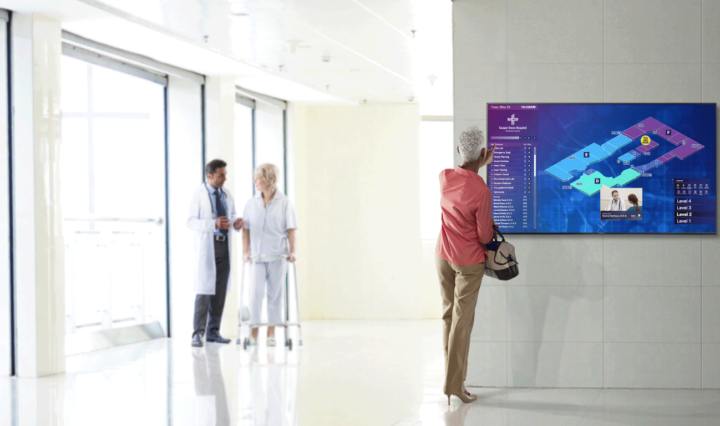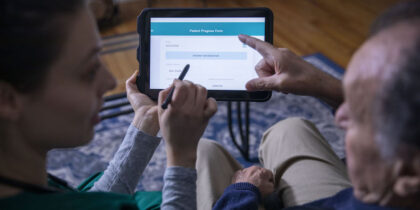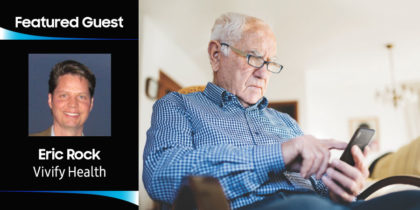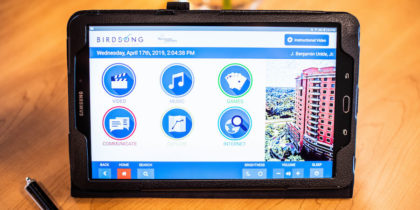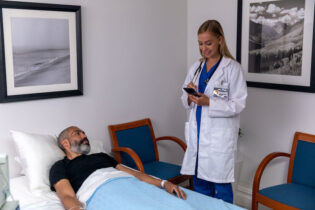Who says doctors don’t make house calls anymore? Plenty of healthcare professionals spend their days driving to patients’ homes and delivering bedside care.
Home health, including hospice, is a large and growing industry. In 2015, spending in these agencies increased 6.3 percent to $88.8 billion, according to the National Health Expenditure report from the Centers for Medicare and Medicaid Services. Home health now accounts for 3 percent of all healthcare spending and employs millions of people.
To keep these roving workers connected and boost employee productivity, forward-thinking agencies like Agrace Hospice and Palliative Care have outfitted employees with secure mobile devices.
How Smartphones Improve Home Hospice Care
Agrace is a nonprofit hospice agency serving south-central Wisconsin and northern Illinois. Its 635 employees see more than 750 patients each day, usually in their homes.
To ensure clinicians get where they need to go — and have all the information they need when they arrive — Agrace provides them with Samsung S5 smartphones. “Empowering staff with this technology improves employee productivity and satisfaction,” says Elizabeth Kopling, director of marketing and communications at Agrace. “It also improves patient care.”
How so? Agrace has identified seven major benefits:
1. Streamlined Communication
In the past, Agrace field workers used company-issued flip phones. When their schedules changed, the home office had to call with updates. If they were with a patient or driving in a rural area with poor cell service, they didn’t always get these messages in a timely fashion and would often have to call back for more information. Now Agrace can email clinicians about schedule changes and provide all the necessary information.
Clinicians can also send secure emails with patient updates on the spot, rather than waiting until the end of the day. This saves time and improves the accuracy of information. “They see multiple patients a day,” explains Kopling, “so they might not remember as many details later in the day, versus doing it right at the point of care.”
2. Greater Connectivity
Agrace chose the Samsung S5 because it’s the only device the company’s cell carrier offers that can place calls and use data at the same time. This gives staff the ability to multitask.
For instance, if a clinician needs to consult with the home office or another caregiver remotely, they can discuss the patient while also viewing patient information via email or looking up medical resources via a company-approved app.
3. Easier Navigation
Smartphones boost employee productivity by helping clinicians find patients’ homes quickly and easily.
“In the past, we had people get lost or go to the wrong house because they had bad directions,” says Regina Schmiechen, an IT technician at Agrace. “But now they have GPS right on their phones.”
Patient experience matters. Technology can help.
Learn how healthcare leaders are using digital tools to improve the patient experience in hospitals. Download Now
4. Improved Security
Because Samsung smartphones are secure, HIPAA-compliant devices, when utilizing third-party encryption products, Agrace employees can securely message each other without worrying about compromising patient data.
“In the past, we could never securely message patient names or phone numbers,” explains Schmiechen. “We could only send initials, which led to confusion.”
Agrace utilizes MobileIron’s mobile device management software so devices are encrypted and employees can only access approved applications.
5. Access to Apps
With the Samsung S5 smartphones, employees can now access apps for work. For example, clinicians use medical dictionary apps, while the sales team uses their CRM app.
“There’s also some utilization by our spiritual and grief counselors,” says Kopling. “They have to be able to serve people of all faiths, so there may be times when they need to do certain blessings or say certain prayers. They can pull up a Bible app or other religious materials.”
Kopling says Agrace recently began using Epic EHR software. Using the Samsung S5 smartphones allows Agrace to explore using the Epic mobile app in the future so clinicians can access patient records and document care from the field.
6. Videoconferencing
Agrace employees also take advantage of the phone’s video capabilities, both for team meetings and remote consultations.
“Because we have such a geographically dispersed staff, some people have to drive long distances to attend staff meetings,” says Kopling. “Now they can use the Skype for Business app to call in from wherever they have a connection.”
Schmiechen says doctors also use videoconferencing to do secure remote consultations with patients.
7. Happier Employees
According to Kopling, these workflow and communication improvements have also increased staff satisfaction.
“Agrace prides itself on being a progressive nonprofit,” says Kopling. “We want to make sure staff has access to the latest technology. Just in October, we were named one of Madison’s best places to work by Madison Magazine. We feel like this is just one of the many factors that contribute to employee satisfaction at Agrace.”
Digital home health tools are on the rise, and innovative solutions like Homecare Homebase’s new platform are expediting workflows and communication across the board.
